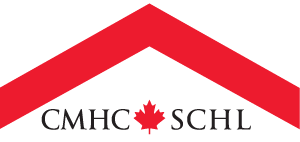The Vancouver region has one of the most unaffordable housing markets in Canada — and in the world. Price increases have impacted affordability and there is a lack of supply to meet the region’s housing needs. Customized solutions to meet changing demands in each community are needed to boost supply to improve affordability.
Our Housing Market Insight, Two decades of demand for homeownership in the Vancouver CMA — evidence from resale transactions, explores the growth and demand trends in the Vancouver region. We use data from the Multiple Listing Service (MLS®). This helps us understand potential drivers of demand shift in:
- location
- price
- type of homes
At a glance
- Home sales in the Vancouver census metropolitan area shifted outside of the City of Vancouver. Much of this growth was in the southeast part of the region.
- Rapid home price growth started as early as 2004 and the value of single-detached homes increased significantly after 2010.
- Sales of single-detached homes with more than 1 kitchen increased across the area — especially in South Fraser.
- In 2021, there were signs of increased competition among buyers and over-bidding.
South Fraser leads in demand for single-detached homes
Our research found that since 2015, ownership demand for detached and attached dwellings has shifted away from the City of Vancouver and into suburban areas. Demand has been concentrated in the suburbs — especially the South Fraser region.
The Vancouver Census Metropolitan Area has urban, suburban and rural areas. For this analysis, we grouped the municipalities into 5 regions:
- City: The City of Vancouver
- Inner Suburbs: Burnaby, Richmond and New Westminster
- North Shore: The City of North Vancouver, District of North Vancouver, West Vancouver, Bowen Island and Lions Bay
- North Fraser: Maple Ridge, Pitt Meadows, Port Coquitlam, Coquitlam, Port Moody, Anmore and Belcarra
- South Fraser: Langley City, Langley Township, Surrey, White Rock, Delta and Tsawwassen First Nation
We also saw a growing preference for detached homes during this time and this demand was centred in the South Fraser area after 2020.
In 2021, South Fraser accounted for 37% of total sales in the census metropolitan area, while the City of Vancouver’s share of sales shrunk to 20%.
Prices of single-detached homes increased significantly after 2010
The Vancouver region has had several periods of exponential growth in average home price in the past 2 decades.
- Between 2004 and 2007, the average home price grew by 14% each year on average.
- Between 2013 and 2017, the average home price grew by 8% every year.
- In 2020 and 2021, during the height of the pandemic, the average price increased by 13% each year.
The decade after 2010 had an exponential price increase in single-detached homes:
- Between 2014 and 2017, the median price increased by 48%
- Between 2019 and 2021, the median price increased by 45%
This has created an increasing gap between single-detached homes and other housing types.
More people want a home with more than 1 kitchen
Sales of detached homes with multiple kitchens increased across the region, especially in South Fraser. Between 2000 and 2021, the sales share of single detached homes with more than one kitchen increased from 24% to 39%.
Homes with more than 1 kitchen offer the potential for rental income via a “mortgage helper”. They are also desirable to multi-generational households.
Signs of more competition and over-bidding in 2021
Increased housing demand during the first few months of the pandemic lead to high price growth. Competition in the region’s market increased in 2021 to the point where successful buyers paid much more than the listing price.
In 2021, most properties were sold between 40 to 60 days of the initial listing date, at a price between 0 to 4% above listing price on average. Between 2019 to 2020, it took 40 to 100 days to sell and average properties were sold below listing price.
Price increases mainly affected the cheapest 20% of homes sold. The average price of the lowest 20% in North Fraser and South Fraser increased by over 65% between 2016 and 2021.
The most expensive 20% of homes, saw a price correction as early as 2016. The average price of this group increased by 9% between 2016 and 2021. In the most expensive regions — the City of Vancouver and North Shore — prices of the top 20% group remained below the 2016 peak.






 Share via Email
Share via Email
